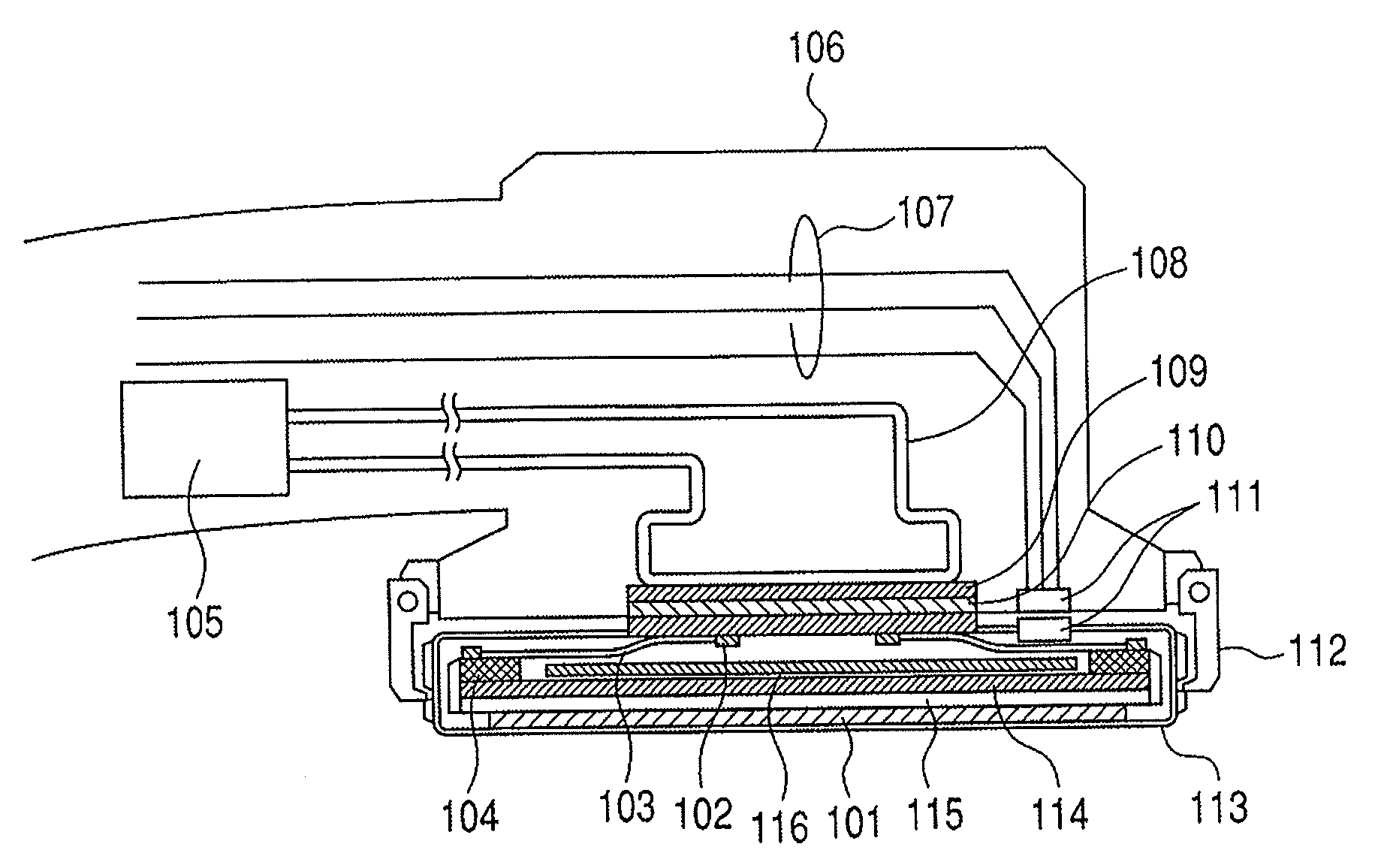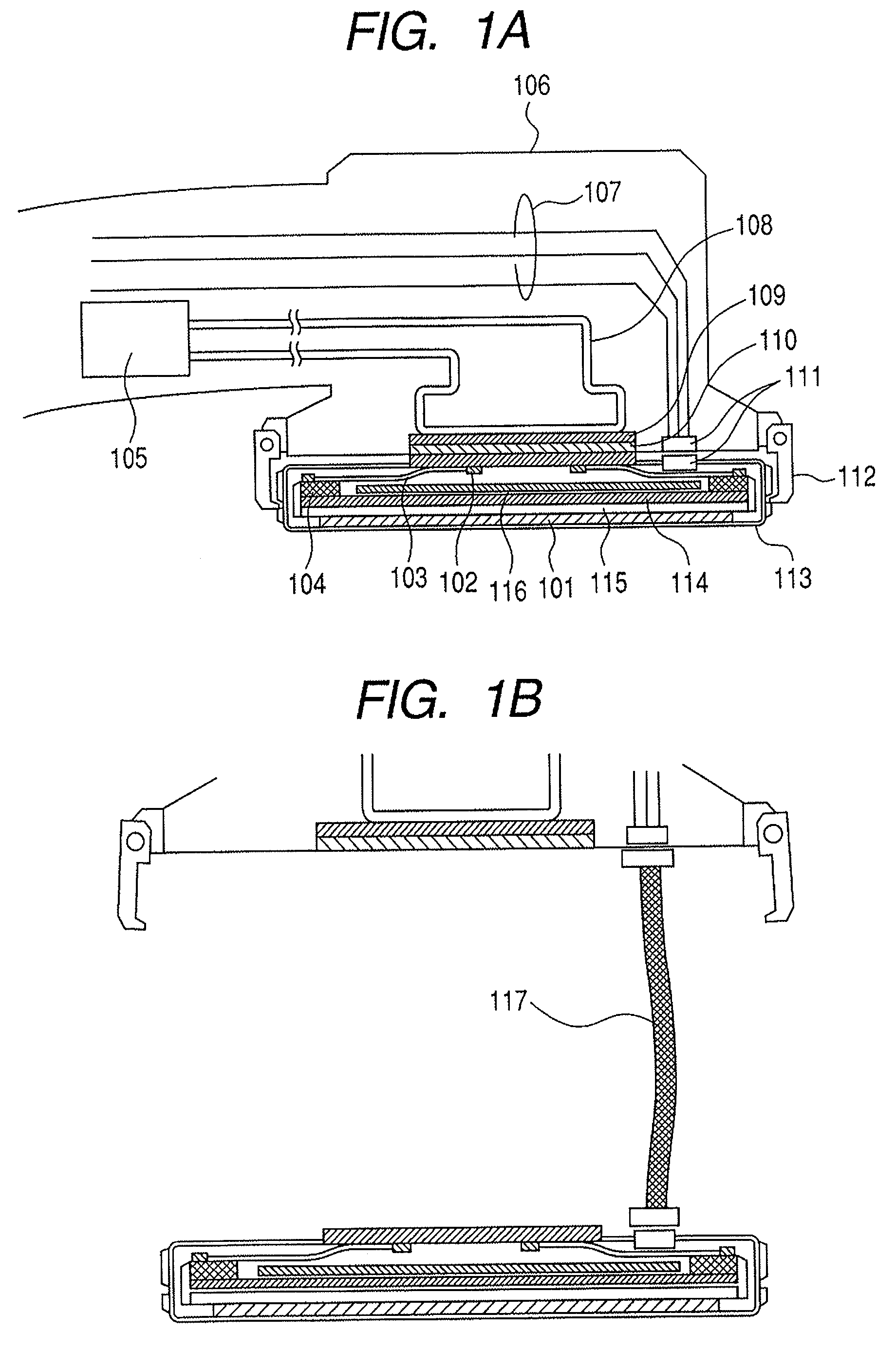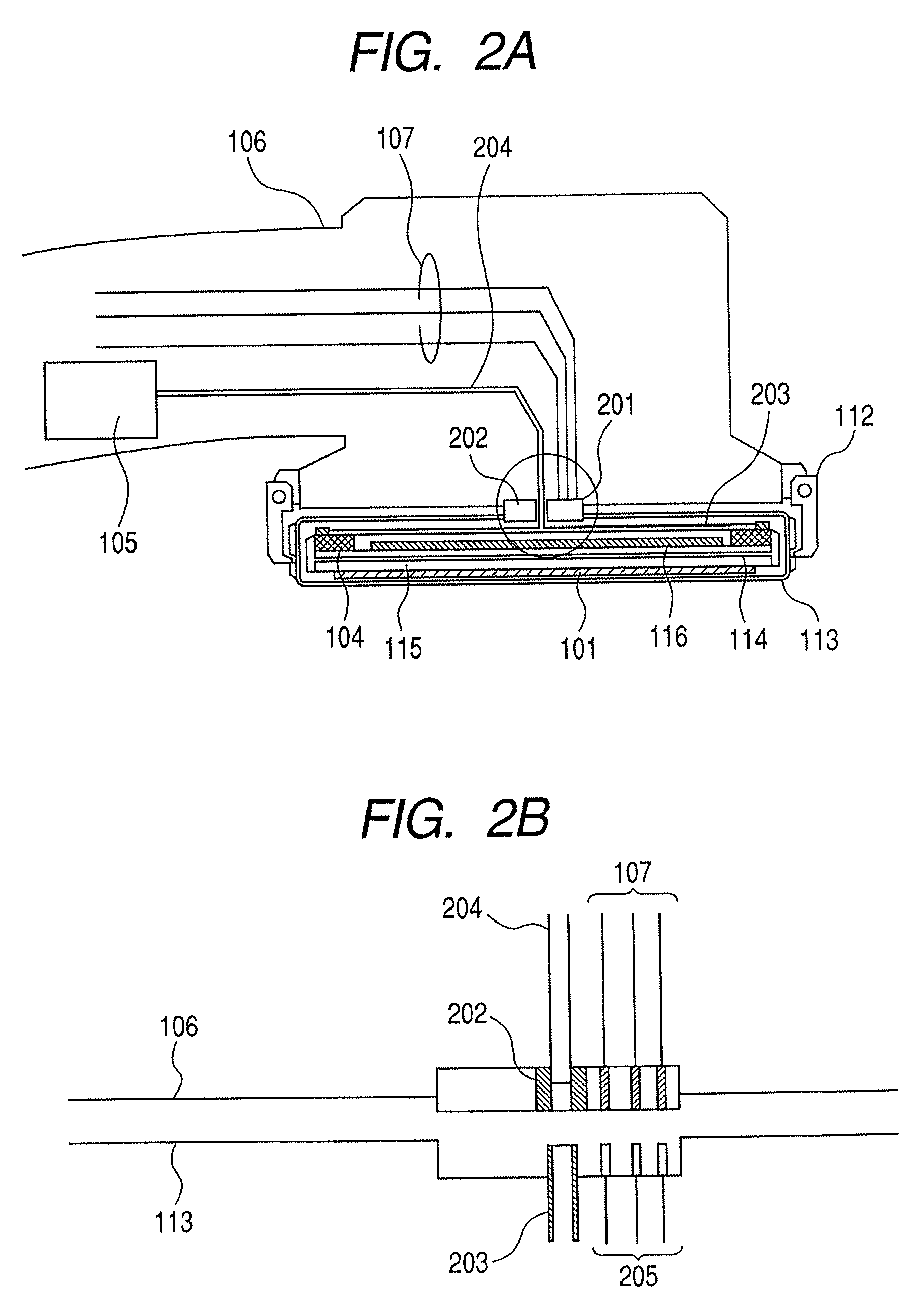Radiation imaging apparatus
a radiation imaging and apparatus technology, applied in the field can solve the problems of increasing not always meeting the requirements of a medical site at present, and burdening medical institutions with a heavy cost, so as to reduce the cost of radiation imaging apparatus and burden medical institutions with cos
- Summary
- Abstract
- Description
- Claims
- Application Information
AI Technical Summary
Benefits of technology
Problems solved by technology
Method used
Image
Examples
first embodiment
[0033]The first embodiment of the present invention is described in detail with reference to FIGS. 1A and 1B. FIGS. 1A and 1B are enlarged cross-sections of a flat panel detector and a holding unit in the radiation imaging apparatus of the present invention. FIG. 1A is a cross-section illustrated with the flat panel detector fixed to the holding unit. FIG. 1B is a cross-section illustrated with the flat panel detector removed from the holding unit.
[0034]In FIGS. 1A and 1B, reference numeral 101 denotes a scintillator; 102, a first thermal diffusion plate; 103, a first heat pipe; 104, a signal processing circuit; 105, a cooling mechanism; 106, a C-type arm being a holding unit; 107, an electric wiring; 108, a second heat pipe; and 109, a second thermal diffusion plate. Reference numeral 110 indicates a thermal conduction plate; 111, a connector being an electric connecting unit; 112, a fixing hook being a mechanical connecting unit; 113, a housing; 114, a support base; 115, a sensor ...
second embodiment
[0039]The second embodiment of the present invention is described in detail with reference to FIGS. 2A and 2B. FIGS. 2A and 2B are enlarged cross-sections of a flat panel detector and a holding unit in the radiation imaging apparatus of the present invention. FIG. 2A is a cross section illustrated with the flat panel detector fixed to the holding unit. FIG. 2B is a cross-section illustrated with the flat panel detector removed from the holding unit. Incidentally, the same reference numerals are used for the same composing elements as in the first embodiment to omit the detailed descriptions thereof.
[0040]Reference numeral 201 represents a connector electrically connecting the flat panel detector to the electric wiring 107 provided on the C-type arm 106. Reference numeral 202 denotes a fitting of metal such as copper high in heat conductivity which is so configured as to bring a first heat pipe 203 into contact with a second heat pipe 204 to conduct heat from the first heat pipe 203 ...
third embodiment
[0043]The third embodiment of the present invention is described in detail with reference to FIGS. 3 to 5C. FIG. 3 is a cross section illustrated with the flat panel detector fixed to the holding unit. FIG. 4A is a schematic perspective view illustrating the connecting mechanism of the flat panel detector and FIG. 4B is a schematic perspective view illustrating the connecting mechanism of the holding unit. FIGS. 5A, 5B and 5C are schematic perspective views illustrating a method of connecting the flat panel detector to the holding unit. Incidentally, the same reference numerals are used for the same composing elements as in the first or the second embodiment to omit the detailed descriptions thereof.
[0044]In the present embodiment, mechanical, electric and thermal connections are made using a first connecting mechanism provided on the flat panel detector and a second connecting mechanism provided on the C-type arm 106 that serves as a holding unit. Reference numeral 301 denotes a fl...
PUM
 Login to View More
Login to View More Abstract
Description
Claims
Application Information
 Login to View More
Login to View More - R&D
- Intellectual Property
- Life Sciences
- Materials
- Tech Scout
- Unparalleled Data Quality
- Higher Quality Content
- 60% Fewer Hallucinations
Browse by: Latest US Patents, China's latest patents, Technical Efficacy Thesaurus, Application Domain, Technology Topic, Popular Technical Reports.
© 2025 PatSnap. All rights reserved.Legal|Privacy policy|Modern Slavery Act Transparency Statement|Sitemap|About US| Contact US: help@patsnap.com



